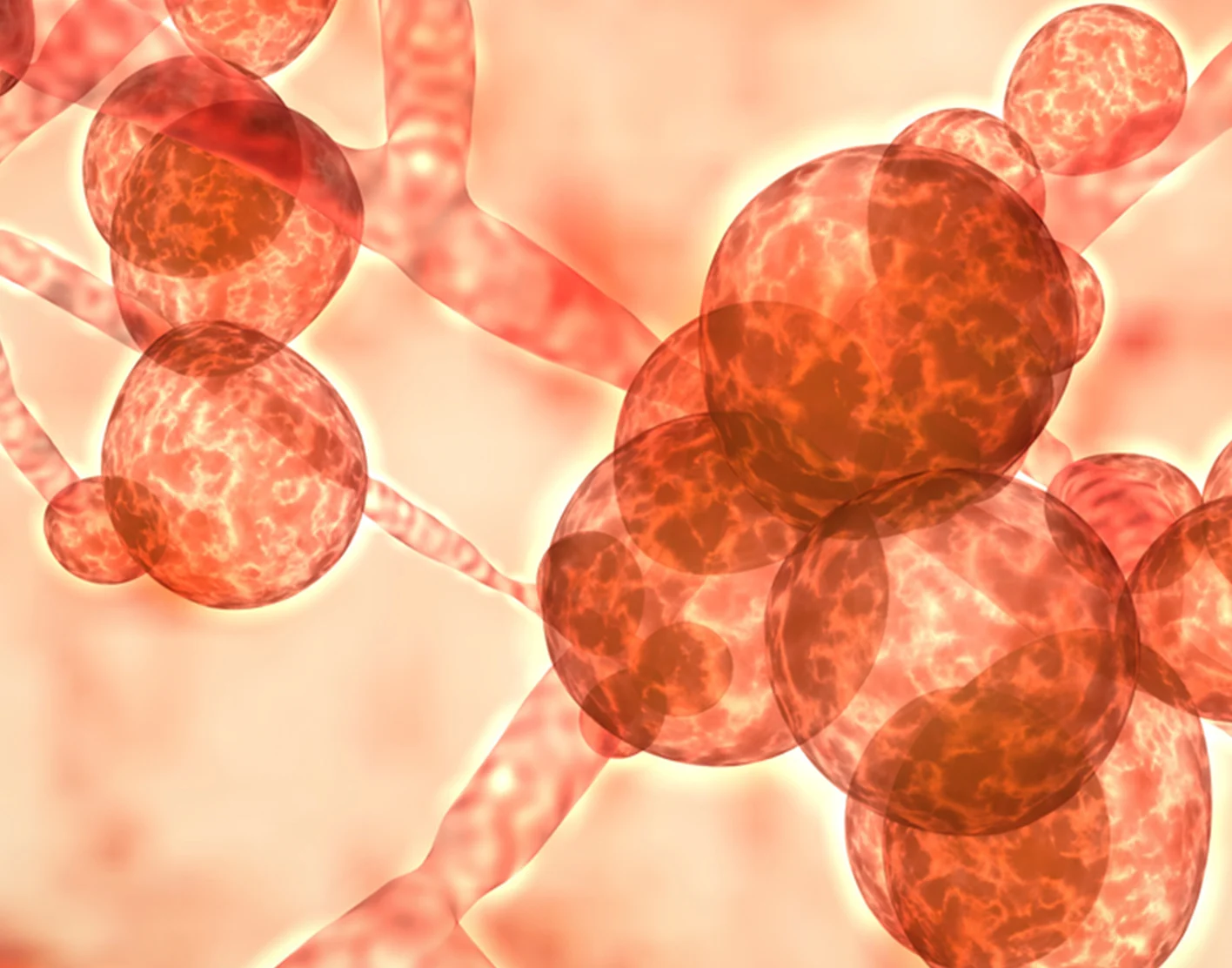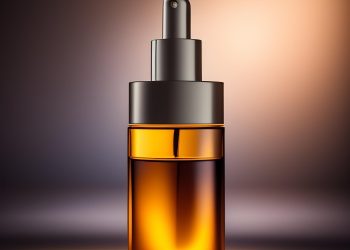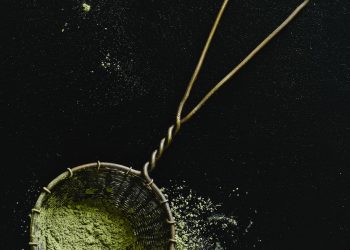Candida species, which normally exist on human skin and mucous membranes, usually do not cause any problem [1].
However, when there’s an overgrowth of these microorganisms, an infection can occur [1].
Candidiasis or yeast infection can affect the skin, mouth or throat (oral thrush), genitals (vaginal yeast infection) and in severe cases, the bloodstream (invasive candidiasis) [2].
Although most cases are not serious and can go away on its own after a few days, this condition can definitely bring you discomfort.
RELATED: 11 Home Remedies for Thrush (& How to Use Them)
11 Home Remedies for Candida Overgrowth
1. Yogurt
Yogurt contains good bacteria called Lactobacillus acidophilus, which as research proves, can retard the growth of infection-causing Candida albicans [3].
Many studies confirm that eating yogurt is an excellent remedy for vaginal yeast infection, even for recurrent cases [4, 5, 6, 7, 8].
In one study performed by American researches from Long Island Jewish Medical Center in New York, 33 women with recurrent fungal infection in the vagina were given either a yogurt-based diet or a yogurt-free diet for six months [4].
It was reported that a “threefold decrease” in infections were observed in the group of women who consumed yogurt-based diet [4].
Daily intake of eight ounces of yogurt effectively reduced the growth and infection of Candida species in the genital area [4].
Similar positive findings were derived from a study conducted in Israel [5].
It was shown that out of the 46 patients who participated in the crossover trial, those who received yogurt enriched with Lactobacillus acidophilus dramatically reduced the episodes of candidal vaginitis [5].
Meanwhile, a study conducted in Barcelona, Spain states that 15 strains of Lactobacillus can effectively block Candida albicans from adhering to the cells in the vagina [8].
All these have led researchers to conclude that Lactobacillus in yogurt serves as a strong protection against fungal infections affecting the vagina.
What You’ll Need:
- 3 cups of yogurt
- 1 tablespoon of yogurt
Recommended Directions:
- Consume three cups of yogurt a day.
- You may add slices of fruits like strawberry or mangoes to your yogurt.
- For vaginal yeast infection, soak a tampon on a tablespoon of yogurt.
- Wear the tampon.
- Repeat twice a day.
RELATED: 12 Most Effective Home Remedies for Vaginal Itching
2. Virgin Coconut Oil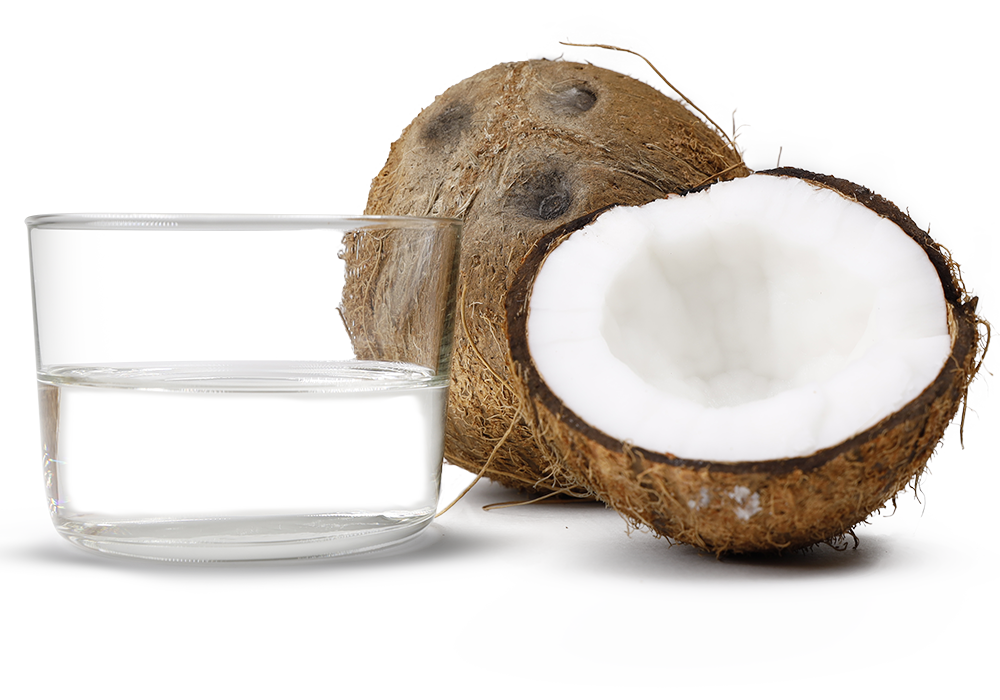
The coconut tree is grown in many tropical regions not only as a food source but also for various medicinal applications [9].
It’s no surprise that it has been called the “tree of life” numerous times.
The oil extracted from the coconut possesses numerous pharmacological properties, working as an antiviral, antibacterial, antiparasitic and antioxidant, among many others [9].
For many years, this has served as an effective household remedy for many types of ailments.
It’s good to know that coconut oil is also a potent antifungal that can fight many strains of fungi, including Candida species [10].
In a 2007 study performed by Nigerian researchers, it was found that virgin coconut oil can successfully inhibit Candida albicans, Candida glabrata, Candida tropicalis, and so on [10].
Most susceptible to its antimicrobial actions is Candida albicans, which can be suppressed at 100 percent rate at a minimum concentration of 25 percent [10].
Amazingly, it was even more active in controlling fungi than the standard antifungal treatment fluconazole [10].
This means that virgin coconut oil should be used for fungal infections that can’t be treated with regular antifungal medications.
As you know, some strains of fungi have already grown resistant to medications.
What You’ll Need:
- 1 teaspoon of virgin coconut oil
Recommended Directions:
- Apply coconut oil on the affected area of the skin.
- Do this three times a day until infection clears.
- You may also consume this amount of virgin coconut oil once a day for one week.
3. Tea Tree Oil
For many years, tea tree oil has been used as a topical antiseptic, but it was only recently that its safety and efficacy had been established in scientific research [11].
Most of its “broad-spectrum antimicrobial” properties can be attributed to tea tree oil’s active compound called terpinen-4-ol [11].
As an antifungal, tea tree oil is the go-to natural solution for various types of fungal infections including oral thrush.
Several studies serve as evidence for its strong inhibitory effects on Candida albicans and other types of yeast [12, 13, 14].
Using agar dilution method against Candida species, researchers evaluated the antifungal effects of 24 essential oils including tea tree oil [12].
It turned out that tea tree oil has the ability to control up to 81 isolates of Candida albicans [12].
Even at low dosage of 0.5 percent, it can efficiently kill 90 percent of the isolates [12].
Apart from terpinen-4-ol, other components of tea tree oil also had significant inhibitory actions on fungi [14].
These include alpha-terpineol, alpha-pinene, beta-pinene, linalool, and 1,8-cineole [14].
Only beta-myrcene was not active against Candida species [14].
This shows how strong the effects of tea tree oil, and how it can actively manage Candida infections.
What You’ll Need:
- 5 drops of tea tree oil
- 1 teaspoon of olive oil
Recommended Directions:
- Mix these two oils.
- Gargle the oil mixture for 10 minutes.
- Spit it out.
- Follow remedy twice a day for one week until oral thrush improves.
- You may also use the same oil blend to apply on infected skin.
- Leave it on for one hour before wiping it off.
- Repeat topical application several times a day.
- Just make sure that you don’t apply tea tree oil on the skin undiluted, as this can cause skin irritation.
RELATED: 12 Incredible Health Benefits of Tea Tree Oil (Backed by Evidence)
4. Oregano Oil
Of the 52 essential oils tested for their efficacy against pathogens, oregano oil was one of the three that had inhibitory effects on all the microorganisms, including Candida albicans [15].
It was only one of three essential oils that exhibited fungicidal effects on all strains of fungi [15].
It also demonstrated “maximum inhibitory activity” against fungal strains in another study dated 2005 [16].
In 2001, researchers discover that daily use of oregano oil in combination of with olive oil can kill 80 percent of Candida albicans species after 30 days [17].
At 0.25 mg/ml, oregano oil can control the growth and germination of Candida albicans [17].
Its efficacy was tested in a group of mice with fungal infections, half of which were fed with either oregano oil or olive oil [17].
Mice that were given oregano oil were observed to have improved more quickly than the mice treated with olive oil [17].
According to the researchers, oregano oil’s broad spectrum antimicrobial properties are due to the presence of thymol and carvacrol [17].
What You’ll Need:
- 5 drops of oregano oil
- 1 tablespoon of olive oil
Recommended Directions:
- Dilute oregano oil in olive oil.
- Apply oil mixture on affected area of skin.
- Do this once a day until condition is better.
5. Olive Leaf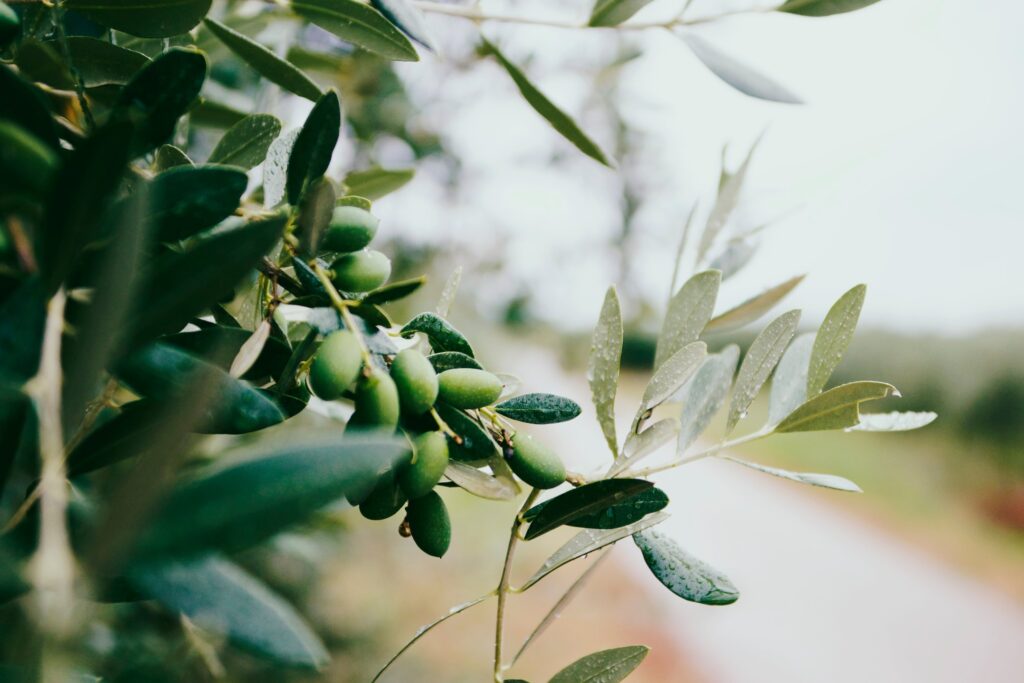
The various medicinal applications of olive tree leaves are widely recognized and utilized in Italy, Greece, France, Spain, Israel and Turkey [18].
Whether as an extract, powder or herbal tea, olive leaves are useful in reducing inflammation, protecting the heart, lowering blood pressure, and stabilizing cholesterol levels [18].
They can also relieve fungal infections such as those caused by Candida albicans.
Studies have shown that olive leaves can combat various strains of microorganisms, not only fungi but also bacteria and viruses [19, 20, 21].
A 0.6 percent of olive leaf extract was enough to kill all the bacteria and fungi included in a study that was published in the Mycoses Journal [19].
At 1.25 percent, it was able to kill dermatophytes within 24 hours [19].
Candida albicans were destroyed after three day exposure with 15 percent of olive leaf extract [19].
At low amounts, olive leaf extract displayed a remarkable double action of antibacterial and antifungal, which indicates its potential as an ingredient for antimicrobial medications [21].
The antimicrobial properties of the leaves are attributable to the presence of phenolic compounds such as caffeic acid and oleuropein [21].
What You’ll Need:
- 2 teaspoon of olive leaves
- 1 cup of water
Recommended Directions:
- Boil water in a pot.
- Remove from heat.
- Steep leaves in water for 15 minutes.
- Strain the mixture.
- Drink the tea.
- Repeat procedure three times a day until infection is cured.
RELATED: How to Use Olive Oil for Skin Health Boost
6. Garlic
Since fungal species like Candida albicans have grown resistant to antifungal medications, it’s a good idea to use powerful natural antifungal agents like garlic [22].
It has been found that garlic can successfully inhibit the activities of microbes that can no longer be controlled by drugs.
Active compounds in garlic such as allicin and ajoene demonstrate potent fungicidal activities that are helpful in combating Candida infections [22, 23].
Allicin refers to a compound that contains sulfur that is found in 3 to 5 mg/g of fresh clove [22].
In order to release this substance, garlic has to be crushed or sliced.
Researchers noted that garlic not only inhibited the growth of fungal species but also suppressed their lipid synthesis [24].
Disruption of the lipid synthesis of fungi played a crucial role in garlic’s antifungal activity [24].
One study also explains that garlic extract causes oxidative stress in Candida albicans, suppressing their growth and respiration, and in turn, depleting them in a faster rate [25].
What You’ll Need:
- 4 cloves of garlic
- 1 teaspoon of honey
Recommended Directions:
- Crush and chop garlic.
- Mix with honey.
- Take this mixture once a day for one week.
7. Cinnamon
Made from the bark of a tree commonly cultivated in Africa and Asia, cinnamon is popular for its sweet aroma and flavor [26].
Aside from its use in culinary, adding unique taste to dishes and desserts, cinnamon is also recognized for its antimicrobial properties [26].
Cinnamon oil is in fact one of the essential oils with the strongest inhibitory effects on fungi, controlling even those that have grown resistant to fluconazole [27, 28].
In a clinical trial featured in the American Journal of Chinese medicine, five patients with oral thrush were given a cinnamon preparation and were instructed to use this for one week [28].
Three out of the five patients showed significant improvement in their condition after being treated with cinnamon [28].
These findings indicate that cinnamon is a useful and practical treatment for oral fungal infections.
What You’ll Need:
- 1/2 teaspoon of cinnamon powder
- 1 tablespoon of olive oil
Recommended Directions:
- Combine cinnamon powder and olive oil to form a paste.
- For oral thrush, take one teaspoon of mixture a day.
- For skin infections, apply a small amount on the affected part once a day for one week.
8. Peppermint
Most people know of peppermint’s minty flavor and fragrance, the main reasons why it’s widely used in food and pharmaceutical products [29].
This perennial herb native to Europe but now also grown in the United States, Canada and other countries has a long list of beneficial effects on people’s health [29].
One of its many purposes is as an antifungal, combating infections such as those caused by yeast.
Its anti-Candida and antimicrobial activities have been proven in various studies [30, 31, 32, 33].
Scientists have used various experimental methods including agar diffusion and microdilution in testing the efficacy of peppermint’s active compounds menthone and menthol [30].
Findings confirm that these components strongly inhibited pathogenic microorganisms [30].
Peppermint oil has excellent antifungal activities against Candida albicans, and is therefore feasible as a natural antifungal agent [31].
What You’ll Need:
- 5 drops of peppermint oil
- 1 teaspoon of jojoba oil
Recommended Directions:
- Add peppermint oil to jojoba oil.
- Spread a thin layer of oil mixture on fungal infections on the skin.
- Leave it on for one hour before wiping it off.
- Do this twice a day for one week to get rid of candida rash.
9. Clove Oil
Oil extracted from the flower buds of clove is typically applied on the skin to speed up wound healing and relieve pain [34].
The primary components of clove oil, which include thymol, eugenol, carvacrol and cinnamaldehyde, are responsible for its activities against microorganisms like fungi [34].
In a study that can be found in the Journal of Medical Biology, it was stated that clove oil’s eugenol successfully inhibited the formation of germ tubes by Candida albicans [35].
Similar positive results can be seen in other studies performed to test clove oil’s potency as an antifungal agent [36, 37, 38].
Clove oil did not only eradicate strains of Candida albicans completely, but also did so with a minimum kill time [36].
Eugenol and thymol are pointed out as the main compounds in clove oil that are responsible for its antifungal actions [37, 38].
These compounds worked by preventing the fungi from adhering to the healthy cells, and causing infection [37, 38].
What You’ll Need:
- 6 drops of clove oil
- 1 teaspoon of almond oil
Recommended Directions:
- Combine clove and almond oils in a bowl.
- Mix well.
- Apply a small amount of oil mixture on affected area.
- For oral thrush, gargle solution for 10 minutes.
- Do these remedies once a day for one to two weeks.
10. Lavender
Whenever someone’s feeling stressed out, lavender can come to the rescue and do what it does best—calm the senses.
Did you know that lavender also works to prevent skin infections caused by yeast?
Its antifungal effects have been well established in various bodies of research [39, 40, 41].
In a laboratory experiment conducted by Italian scientists, it was shown that lavender can inhibit the growth and tube formation as well as deplete up to 50 isolates of Candida albicans, 28 of which existed in the oral cavities while 22 in the vagina [40].
Contributing to these actions are its primary components, which include linalool and linalyl acetate [40].
Take note that the laboratory results show that 2 percent lavender oil killed 100 percent of the Candida albicans cells within 15 minutes [40].
Linalool, when isolated and applied in pure form, acted even more quickly, killing Candida albicans in as short as 30 seconds [40].
Portuguese scientists mention that lavender works even more effectively when combined with honey [41].
What You’ll Need:
- 5 drops of lavender oil
- 1 teaspoon of jojoba oil
- 1/2 teaspoon of honey
Recommended Directions:
- Blend oils in a glass jar.
- Pour a small amount to honey.
- Use this mixture on affected areas of the skin.
- Repeat remedy twice a day for one to two weeks.
11. Boric Acid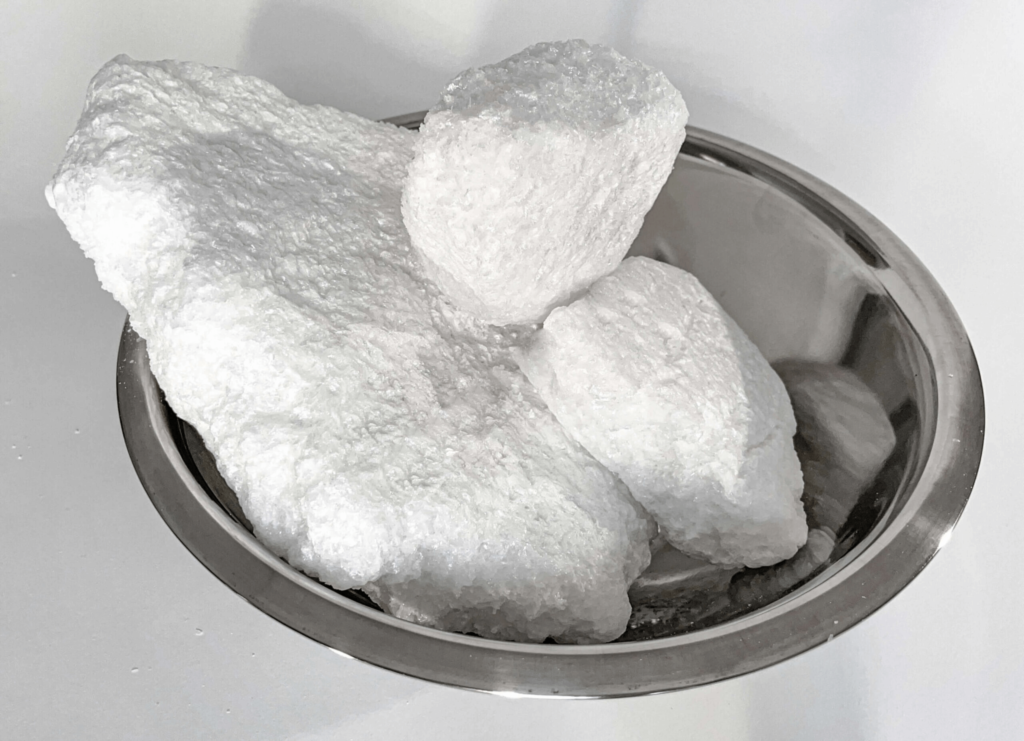
Also a must-try for Candida infection is boric acid.
In 2007, a team of researchers from India requested over 100 diabetic patients with vulvovaginal candidiasis to use either oral fluconazole or boric acid vaginal suppository for 14 days [42].
As it turns out, boric acid in the form of a vaginal suppository was more effective than fluconazole in controlling fungi strains that infect the vagina [42].
Greek scientists, meanwhile, did a comprehensive review of 14 studies including randomized clinical trials, case reports and case series to determine whether there was enough clinical evidence to establish boric acid as an antifungal treatment [43].
Results show that the cure rate varied from 40 percent to 100 percent, but it all pointed out that boric was indeed effective for this problem [43].
As for side effects, a few studies report of burning sensation, water discharge and vaginal erythema among some boric acid users [43].
What You’ll Need:
- 1 teaspoon of boric acid
- 3 cups of water
Recommended Directions:
- Dilute boric acid in water.
- Use this to wash the vagina once a day for one to two weeks.
- Discontinue use if any adverse reactions are experienced.
Bottom Line
Candida albicans can exist in your body without inflicting any harm.
But once it does, you need to learn how to control it using natural remedies that work even on drug-resistant fungi.
We hope the home remedies discussed above will help you treat candida in the most effective way. Share with us your experience, feedback and queries in the comment section.
READ NEXT: 21 Home Remedies for Foot Fungus, Nail Fungus & Athlete’s Foot
